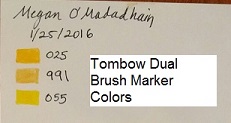Here are some suggestions for finding and organizing tangle patterns.
Finding Tangle Patterns
Here are some ways to find new tangle patterns with links to useful resources.
 |
| My "Tangle patterns" board on Pinterest. |
Organizing Tangle Patterns
There are many different ways of saving and organizing tangle patterns. I think there are really three main considerations to take into account: how you want to access the patterns, how much help you need with recreating steps, and how important it is to you to be able to categorize and rearrange your tangle patterns.
Pattern Binder/Portfolio
If you like having a physical copy of your patterns rather than looking them up online, consider buying a 3-ring binder or portfolio with plastic sleeves that you can put tangle patterns into. I like using a portfolio that is loosely organized by pattern category so that I can flip through and find different patterns quickly. A portfolio gives you the flexibility to categorize and rearrange tangle patterns fairly easily.
To get a good start on a pattern portfolio I printed out
tangle patterns that I found online that were organized into small squares, one pattern per square (I chose to print them out on 8 1/2 inch by 11 inch paper). I didn't want huge books full of patterns to haul around and didn't feel that I needed step-by-step instructions for most patterns, so this worked fine for me. The pages of patterns that I printed came somewhat pre-organized into categories. I also created pages with blank squares so I could add additional tangle patterns and variations to the appropriate category later.
 |
| My pattern portfolio. The page on the left contains patterns I drew on a page of blank squares. The page on the right was printed from Pinterest (examples of "scale" patterns). |
I write the name of the tangle pattern below the example if I know it, which helps me look up step-by-step instructions online later if I need them.
You can also buy 3-ring binder plastic inserts that have multiple slots on each page, often sold to store things such as recipe cards (
two 4 inch by 6 inch cards per page) or baseball cards (
nine baseball cards on each page). Here is an example of one of my tangle patterns copied onto a small
blank card that you can buy that has spaces for tangle steps on one side and room for a tangle name, example, and designer on the other. These cards are the size of baseball cards (2 1/2 by 3 1/2 inches), so may be too small for some tanglers.
 |
| My "Knotwork" tangle pattern drawn on a blank zentangle card. |
You can also create your own template for saving tangle patterns or download various options on Pinterest.
Online Organization
I created a Pinterest board called "
Tangle Patterns" to help me save patterns I found online. If you want minimum bulk to carry around and like to have step-by-step instructions for each pattern, this can be a good option. If organizing patterns is really important to you, you could create different boards for different categories of tangles -- whatever categories you find helpful. It is easy on Pinterest to "pin" a pattern to more than one board if you think it belongs in both "grid" and "spiral" categories, for example.
 |
| My "Tangle Patterns" Pinterest Board |
Other Options
For me personally, digging through piles of tangles on cards seems cumbersome and would drive me crazy. I remember reading about someone, though, that loved putting all of their cards into a box and randomly grabbing out a card each time they did a new section of their tangle!
Another option for organizing tangles is to punch a hole in them and put them on
ring clips (or even a bracelet with each tangle laminated). I generally find flipping through patterns on a ring to be annoying (especially if you have a lot of patterns on the ring), but it can be useful. I did this with a set of tangle pattern cards aimed at kids (
Yoga for Your Brain Kidz Cards) so that the kids had a set of relatively easy tangle patterns that they would be less likely to lose. Since there were only a relatively small number of cards, this worked fine.
 |
| I punched holes in the corner of each "Kidz Card" and put a ring through the holes. |
If you like to grab a small selections of cards to keep with you (on a trip for example), having a small subset of your collection on a ring might be a good idea.















